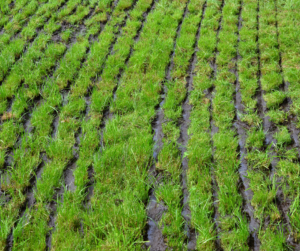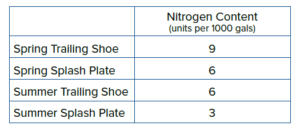Get a 24 hour weather forecast

Slurry is an important nutrient that needs to be used wisely.
The average or book value for slurry in terms of NPK is 9-6-30 but slurry value varies depending on where its stored.

The value of slurry is dependant on the conditions it is spread in and the location it is spread on. Slurry spread in the right conditions and the right location is worth €43 more per cow than slurry spread in poor conditions.
Maximising the value of your slurry:
1. Get your slurry tested through the Dairygold Analytical Services Laboratory
This will give you the exact value of your slurry. Recent tests carried out by the Dairygold Teagasc joint program have shown big variations in slurry nutrient profiles.
2. Apply slurry to silage ground to maximise its P and K value
Standard slurry has a nutrient profile of 6-6-30 for N, P and K. Most of its value comes from its P and K content. Silage ground is hungry for P but is particularly hungry for K. Slurry should be targeted to areas of the farm with the highest demand for P and K i.e. silage ground. When spreading slurry on the milking platform target paddocks with low P and K indexes first and the lowest grass covers in spring. Trailing shoe and dribble bar can be using to apply slurry to covers <1,000 kg DM/ ha.
3. Apply slurry in spring using dribble bar or trailing shoe to maximise its N value
Moving from spreading in the summertime with a splash-plate to a springtime application with a dribble bar or trailing shoe will give you an extra 6 units of N/1,000 gals from your slurry.

To achieve the increased nitrogen values, this slurry must be spread on good grass (high ryegrass content) in growing conditions. Given the current value of slurry, we should be asking ourselves if we are reluctant to spread chemical N fertiliser during times of the spring due to poor growing conditions, should we be spreading slurry either?
4. Talk to your contractor
Have a chat with your contractor before he comes, and outline your objectives. Make sure the contractor does not over apply slurry – grass growth is low in the spring so too much slurry is a waste of money and has the potential to significantly impact water quality.
There should be no slurry application:
• on waterlogged or frozen ground
• if heavy rain (4mm/hr) is forecast within 48 hrs
• on steep slopes (average incline ≥20%)
KEY POINT: For a 100 cow herd spreading slurry in the right conditions and location is worth €4300 more than if it is used in the incorrect way.
For more information on the benefits and optimal application of slurry on Spring grass contact your Area Sales Manager!